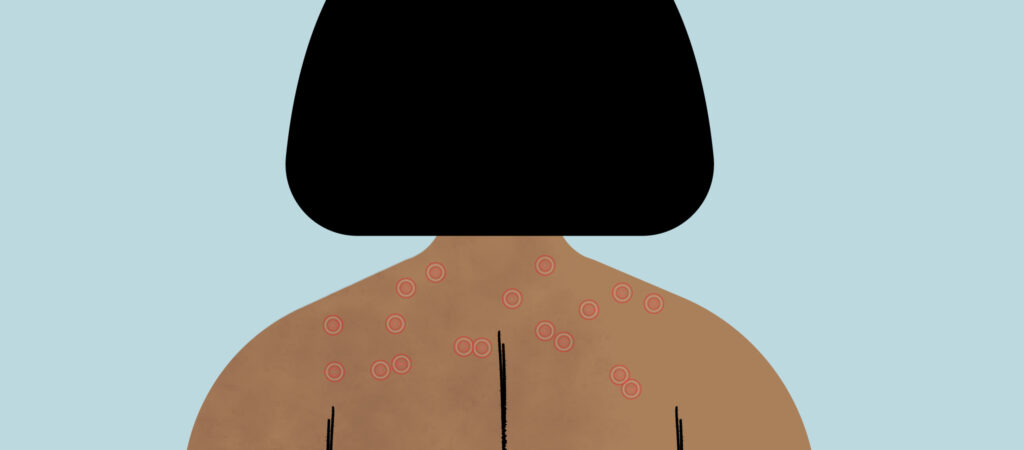What Are The Differences Between Face and Body Acne?
Acne is associated with the face but can pop up on any part of the body where there are hair follicles. Face and body acne are essentially the same thing, but there are a few key differences between the two and how to treat them.
If you’re looking for a way to treat face and back acne, start by understanding just how they work. Here’s what you need to know:
What Causes Different Types of Acne?
Acne of all types has a number of possible causes. Breakouts are often the result of multiple factors which can include:
Nurx offers prescription treatment for acne, anti aging, melasma, rosacea, and eyelash growth.
- Genetics
- Hormones
- Age
- Medications
- Skincare routine
- Stress
- Diet (or change in diet)
Not all of these factors will affect everyone’s skin in the same way. Some people, for example, find that cutting back on carbohydrates or dairy products can reduce acne, while others won’t see any differences from diet changes.
Another variable that has a large impact on acne is genetics. The locations, timing, and severity of your parents’ acne when they were your age could tell you something about what to expect from your own breakouts.
Facial Acne
One of the most common causes of facial acne in particular is hormonal changes. Normal hormone fluctuations or imbalances in the body’s hormone levels can either cause breakouts or make existing acne problems worse. This is most common among teens as they go through puberty, but can last well into adulthood.
The hormone changes associated with menstruation can also cause acne in many women, and certain forms of birth control may help by evening out hormone levels. Another oral medication that regulates hormones for women with acne is spironolactone, a pill originally designed as a blood pressure medication which now is prescribed for acne because it reduces androgen hormones in the body. Women going through perimenopause or menopause may find that shifting hormonal balances cause acne as well.
Hormonal acne generally affects only the lower third of the face (cheeks, jawline, chin and neck) but can also affect the temples. People with hormonal acne will usually observe some correlation of the flares with the menstrual cycle.
Body Acne
Facial and body acne are generally caused by the same factors, namely clogged pores and inflammation from overactive oil glands, excess dead skin cells, acne-causing bacteria. Body acne is most common on the chest and back because these areas have many sebaceous glands, which means the follicles in those areas are more likely to become clogged with excess sebum, trap dead skin cells and bacteria and cause inflammation.
In addition to the standard factors, body acne in particular has a few additional causes to keep in mind. Friction between your clothes and your skin can irritate your pores, causing outbreaks. Though this source of acne is usually associated with the body, since the COVID-19 pandemic began there’s been a new type of friction-based acne: “maskne.”
Along with friction, certain materials are more likely to cause body acne. Synthetic fabrics, such as polyester or nylon, can worsen clothing-related friction and cause breakouts as a result. Some people find that certain types of laundry detergent irritate their skin and cause acne-type break-outs.
Sweat can provide the perfect environment for acne-causing bacteria to grow and multiply, so changing clothes after a sweaty workout or as soon as you get home from a hot day outdoors can help prevent body acne.
Since most people have different skincare regimens for their faces and bodies, the discrepancies between the two may account for some body acne. If you’re consistently seeing acne on your body but not your face, consider treating the affected areas of your body with the products you use on your face and ditching any soaps or lotions you’ve been using on your body.
How to Treat Body Acne
Although paying attention to the factors explained above may help prevent body acne, in many cases you’ll need specific skin treatments and maybe even oral medications to get rid of pimples on your back, chest, or other acne-prone areas. If you have acne over broad swaths of your body, using topical (cream) treatments may be prohibitively expensive because you have so much skin to treat. In that case an oral medication like oral antibiotics, spironolactone, or birth control pills will be able to more efficiently and cost-effectively treat your body acne. If your acne is severe and scarring, the medication isotretinoin (aka Accutane) may be your most effective option.
If you’re looking for the right treatments to get rid of acne on your face, body, or both, request acne treatment through Nurx. Our medical team can guide you through the process and help you find your personal path to clearer skin.







